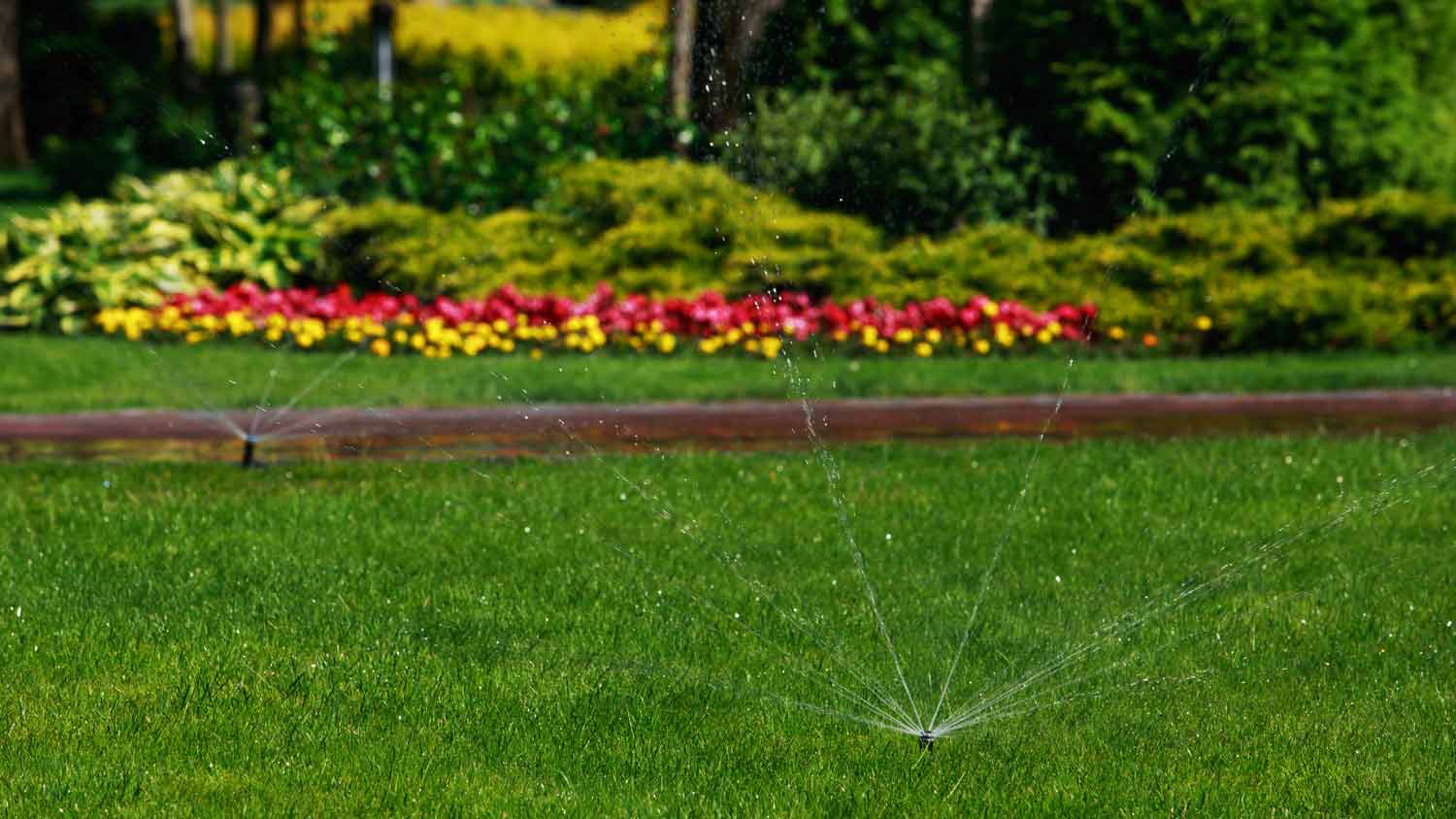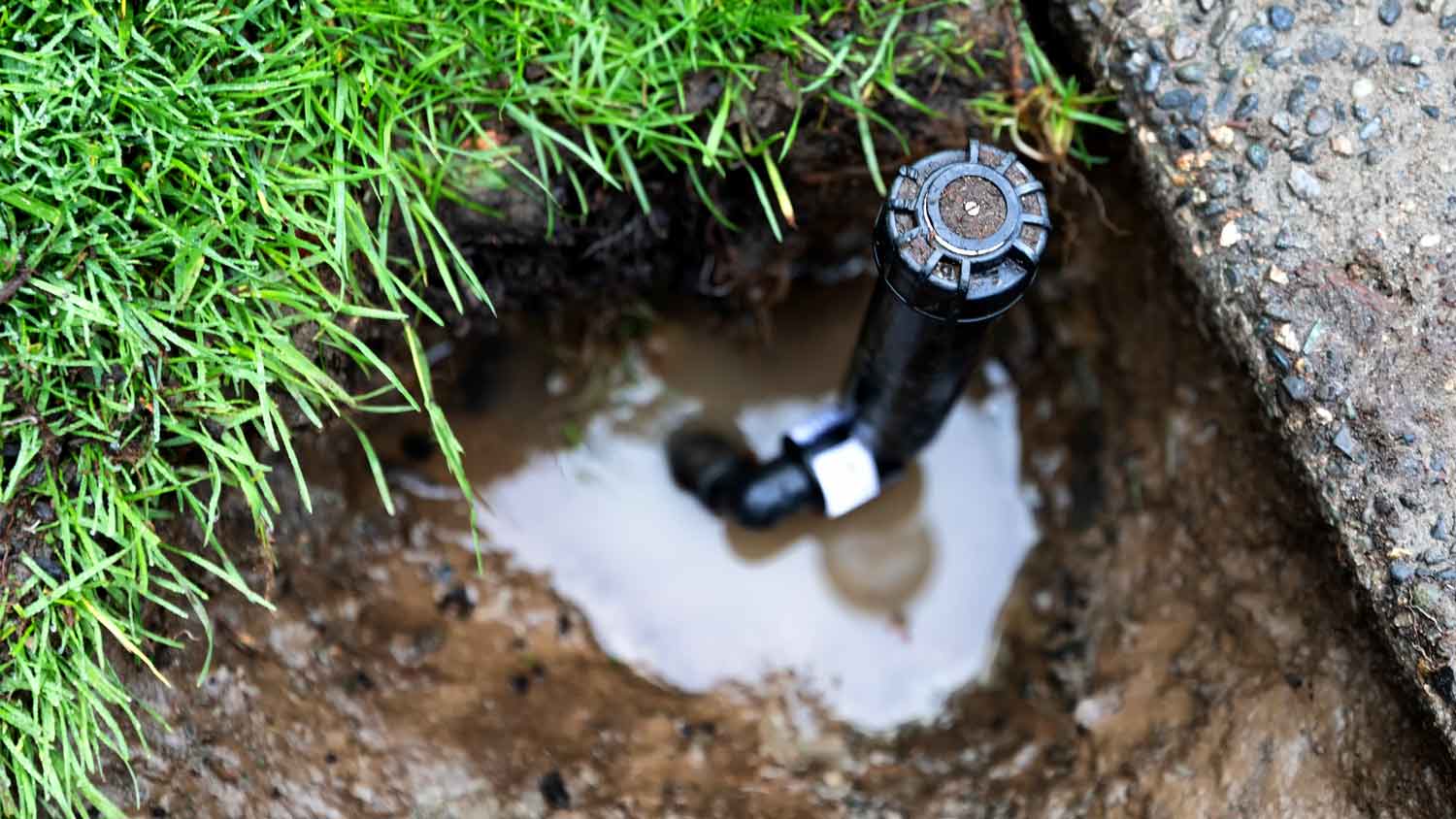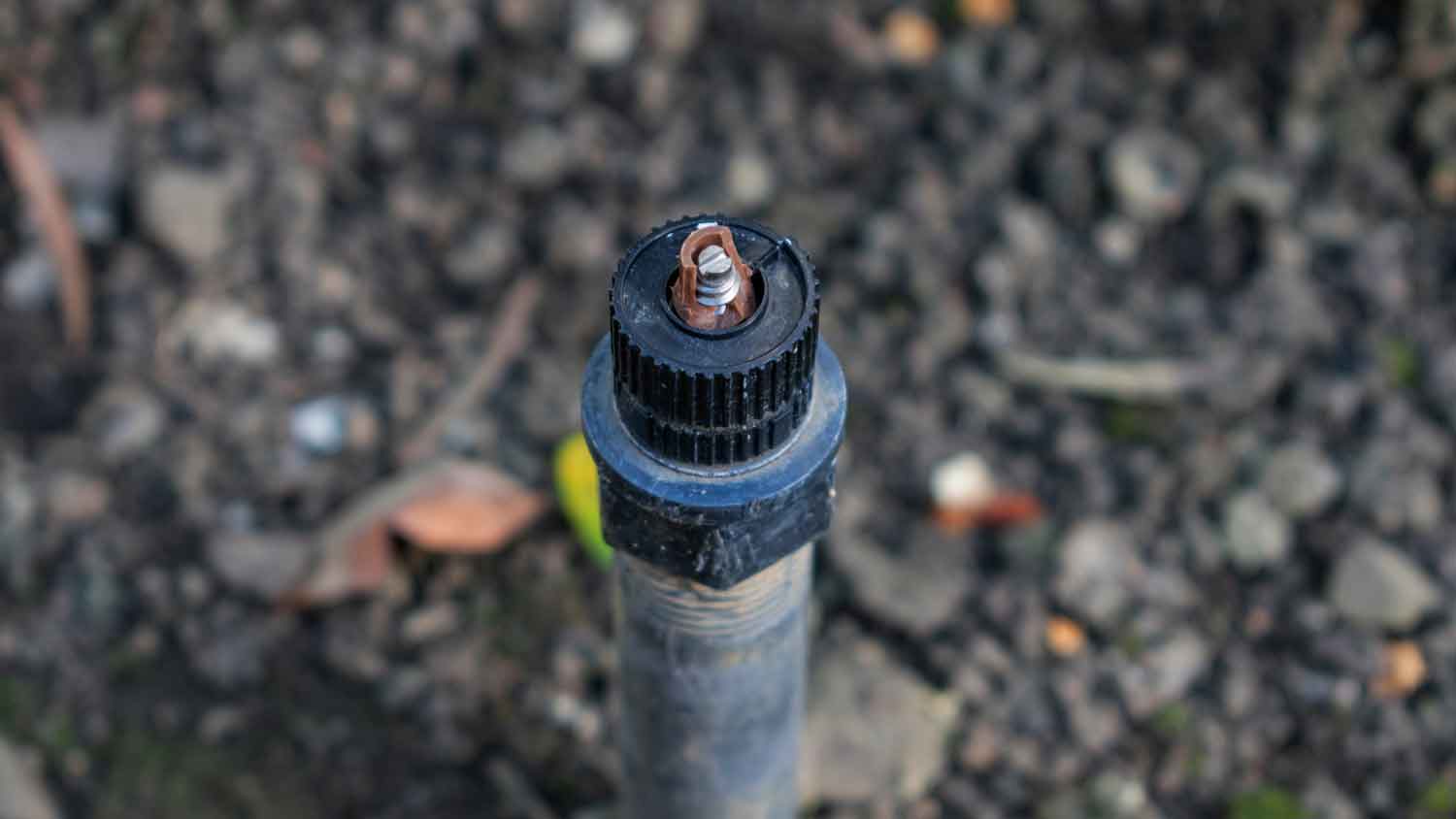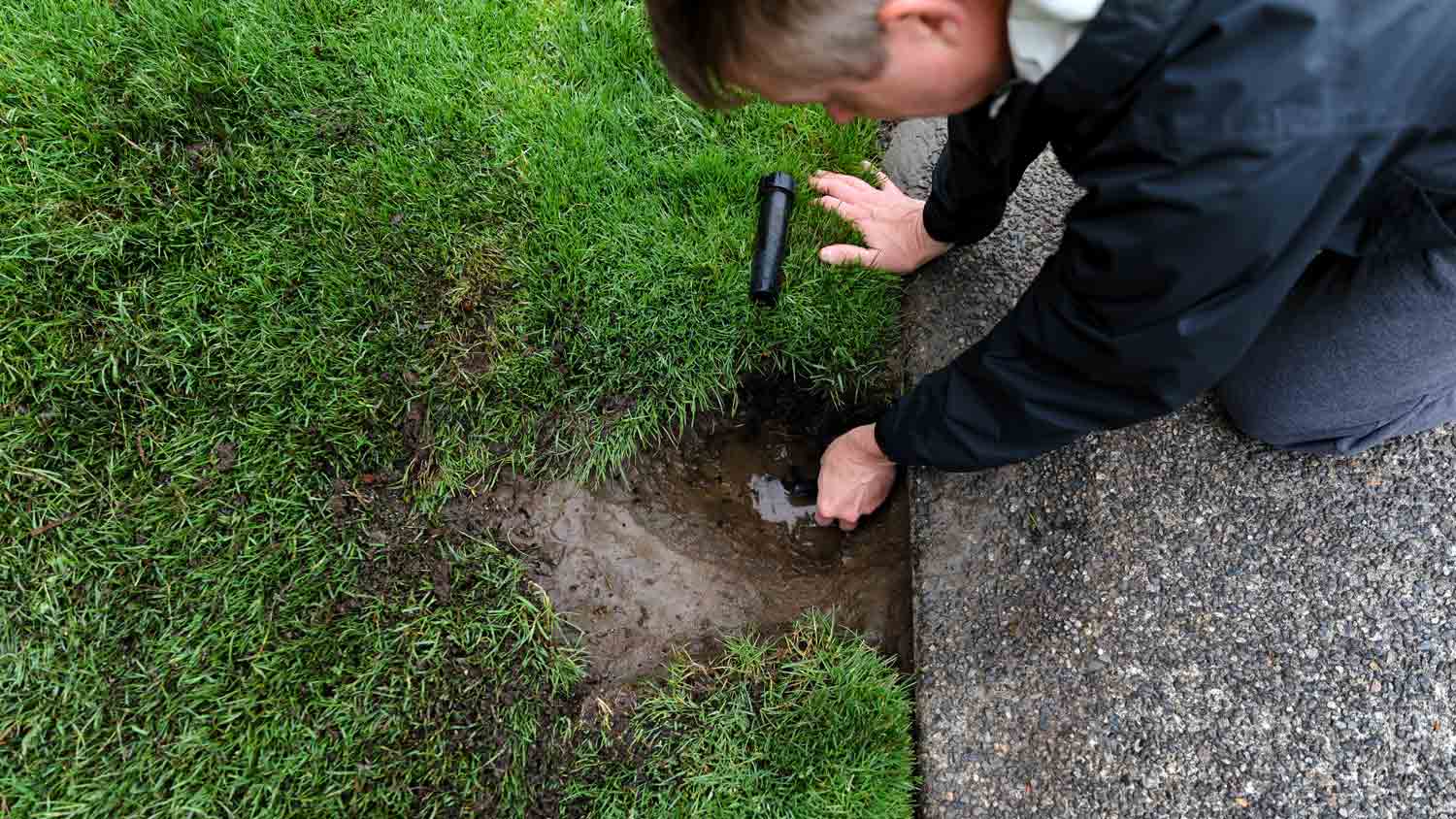Sprinkler Head Popping Up but Not Spraying? 4 Reasons Why Your Sprinkler System Isn’t Working
What to do when your sprinkler system won’t go with the flow


A sprinkler head that isn’t spraying could be clogged with dirt and debris.
Alternatively, the radius adjustment screw could be turned off.
You might also notice decreased water output and uneven spray patterns.
More significant sprinkler system issues are best left to a pro.
Your sprinkler system can keep your lawn lush, green, and healthy by providing the water it needs to grow well. However, like any home system, a sprinkler system can develop issues that prevent it from working correctly. One such issue is the sprinkler head popping up but not spraying. So, what causes this, and can you fix it yourself by following these sprinkler repair tips, or do you need to hire a pro? This guide addresses all this and more.
1. Clogged Sprinkler Head

The most common reason for a sprinkler head popping up but not spraying is debris clogging the sprinkler head. When the sprinkler heads are buried in sleeves in the ground, mud and dirt can infiltrate the holes in the heads, clogging them and preventing them from spraying.
The Solution
Remove minor blockages by clearing the sprinkler head with a paper clip. More severe blockages will require the head to be removed, soaked in water, and cleaned with a wire.
2. Clogged Pipes
In some cases, dirt and debris might have made their way through the sprinkler head and into the pipes. This can block the water from reaching the sprinkler head, causing it to pop up from the ground but not spray.
The Solution
Shut off the water at the valve, dig carefully around the sprinkler heads, and unscrew them from the system. Turn the water on to flush out the pipes and remove any debris preventing the water from reaching the sprinkler heads. Then, reattach the heads and test the system to ensure the clog has dissipated.
3. Radius Adjustment Screw Is Off
The radius adjustment screw allows you to adjust the direction of the spray based on which part of your yard you want to water. However, if the radius adjustment screw is in the “off” position, the sprinkler head will not spray.
The Solution
Turn the radius adjustment screw counterclockwise to turn it back on. The sprinkler head should spray once you do this; you’ll just need to adjust the direction based on your watering needs.
4. Broken Sprinkler Head

If you’ve checked the sprinkler head for debris and confirmed that the radius adjustment screw is in the “on” position but your sprinkler head still won’t spray, it could be broken.
The Solution
Replace the broken sprinkler head with a new one. You may be able to do this yourself by digging around the head carefully, unscrewing the broken head, and attaching a new one. However, you might want to hire a pro to do this if you’re not confident in your DIY skills.
Signs of a Clogged Sprinkler System
Besides your sprinkler head not spraying water, there are several signs that the system may be clogged. Watch out for the following issues.
Decreased water output: A clogged sprinkler system might not spray water at all, or it might spray less than usual.
Uneven spray patterns: If some sprinkler heads are spraying water as usual and others have decreased output, there could be a clog in the system.
Sputtering: Sprinkler heads that are sputtering instead of releasing a steady flow of water are likely clogged.
Increased water bills: If you notice your water bill has gone up, it could signal a problem with your sprinkler system—either a clog or a leak.
When to Call a Pro

If you have a basic sprinkler system and are confident in your DIY skills, you should be able to troubleshoot your sprinkler heads to diagnose and repair the issue. However, sprinkler systems can be quite complex, and attempting to fix them without the proper knowledge could lead to additional damage to the system, costing you more money to fix.
A local sprinkler repair company will be able to diagnose the problem quickly and will likely have the right parts and equipment on hand to repair your sprinkler system. Knowing who to call for sprinkler repair will save you time if you notice your sprinkler heads popping up but not spraying and want to remedy the problem ASAP.
Frequently Asked Questions
Replacing a broken sprinkler valve costs between $15 and $40 if you do the work yourself. This project will take about an hour for someone with intermediate DIY skills. However, making a mistake could cause further damage. Hiring a pro to replace the valve costs more, at $75 to $100 per hour, but can save you money in the long run.
Ideally, you should clean your sprinkler heads once a year as part of regular maintenance. However, if you notice clogging or reduced water flow, you may need to clean the sprinkler heads more frequently. Keeping your sprinkler heads clean can prevent problems down the road and keep your sprinkler system in good working order for longer.















